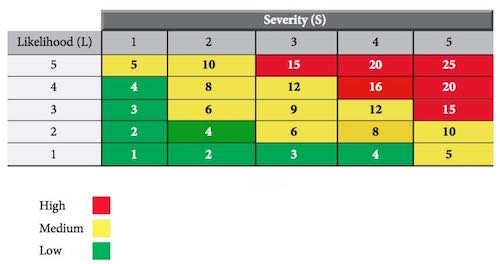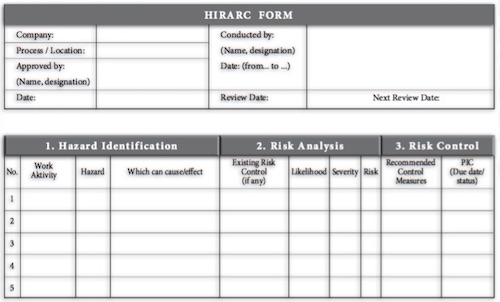Nearly every job can be broken down into job tasks or steps. In the first part of the job hazard analysis, list each step of the job in order of occurrence as you watch the employee performing the job. Be sure to record enough information to describe each job action, but do not make the breakdown too detailed. Later, go over the job steps with the employee.
After you have recorded the job steps, next examine each step to determine the hazards that exist or that might occur. Ask yourself these kinds of questions:
- Is the worker wearing personal protective clothing and equipment, including safety harnesses that are appropriate for the job?
- Are work positions, machinery, pits or holes, and hazardous operations adequately guarded?
- Are lockout procedures used for machinery deactivation during maintenance procedures?
- Is the worker wearing clothing or jewelry that could get caught in the machinery or otherwise cause a hazard?
- Are there fixed objects that may cause injury, such as sharp machine edges?
- Is the flow of work improperly organized (e.g., Is the worker required to make movements that are too rapid)?
- Can the worker get caught in or between machine parts?
- Can the worker be injured by reaching over moving machinery parts or materials?
- Is the worker at any time in an off-balance position?
- Is the worker positioned to the machine in a way that is potentially dangerous?
- Is the worker required to make movements that could lead to or cause hand or foot injuries, or strain from lifting - the hazards of repetitive motions?
- Can the worker be struck by an object or lean against or strike a machine part or object?
- Can the worker fall from one level to another?
- Can the worker be injured from lifting or pulling objects, or from carrying heavy objects?
- Do environmental hazards - dust, chemicals, radiation, welding rays, heat, or excessive noise - result from the performance of the job?
Repeat the job observation as often as necessary until all hazards have been identified.











